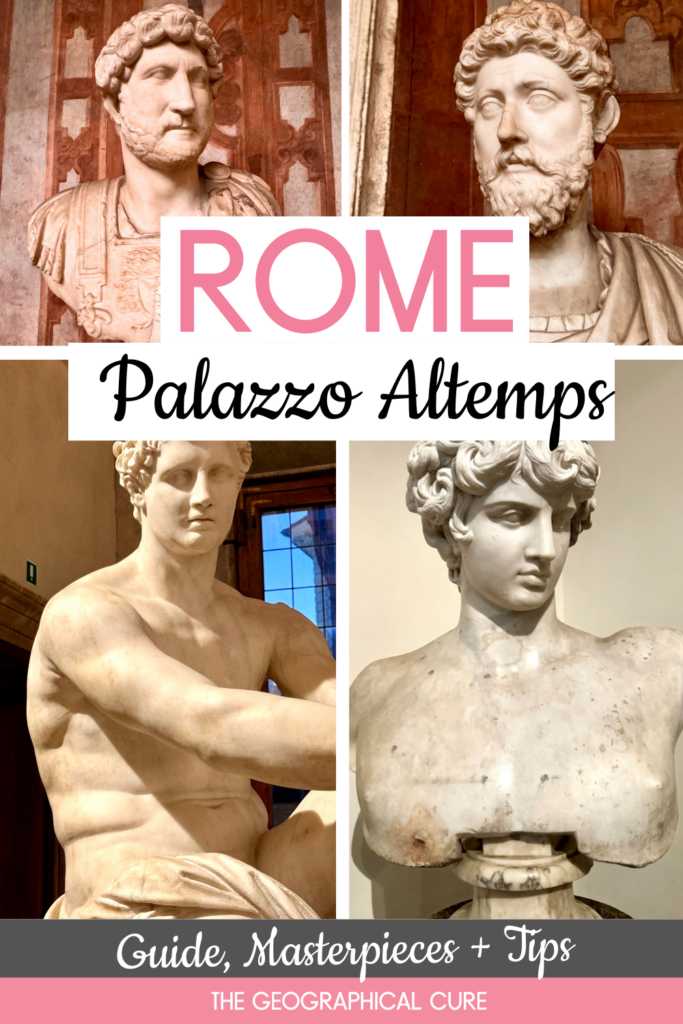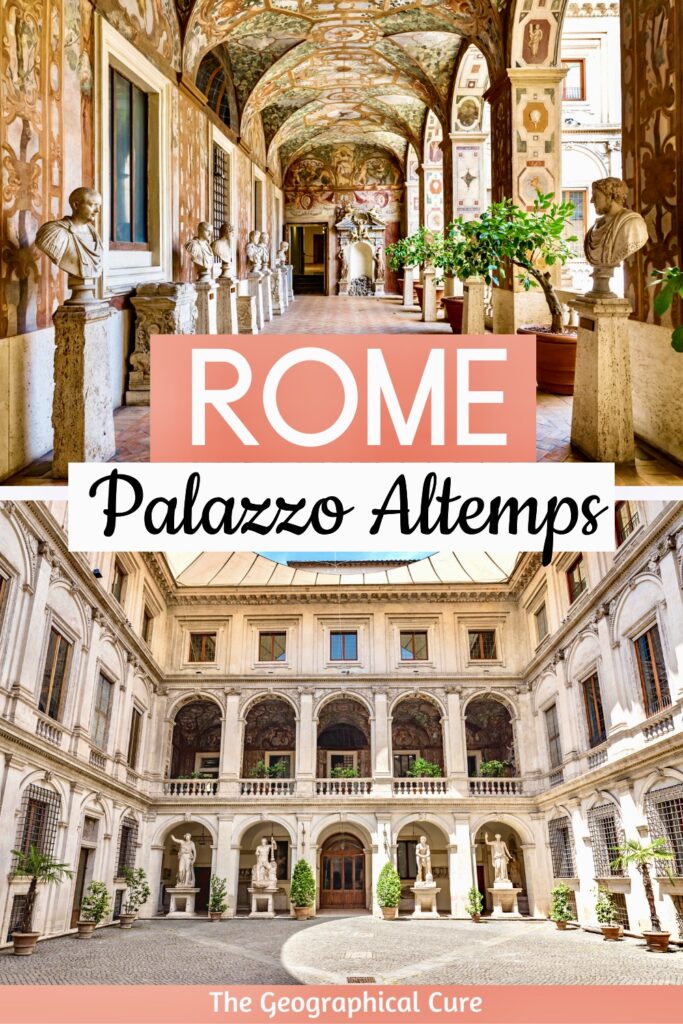Palazzo Altemps was once the residence of 16th and 17th century noblemen in Rome. It’s been perfectly restored by the Italian government and is a joy to visit.
The museum is part of the National Museum of Rome and is home to priceless pieces of classical statuary. Many pieces come from the celebrated Ludovisi collection.
It was amassed by Cardinal Ludovico Ludovisi in the 17th century.
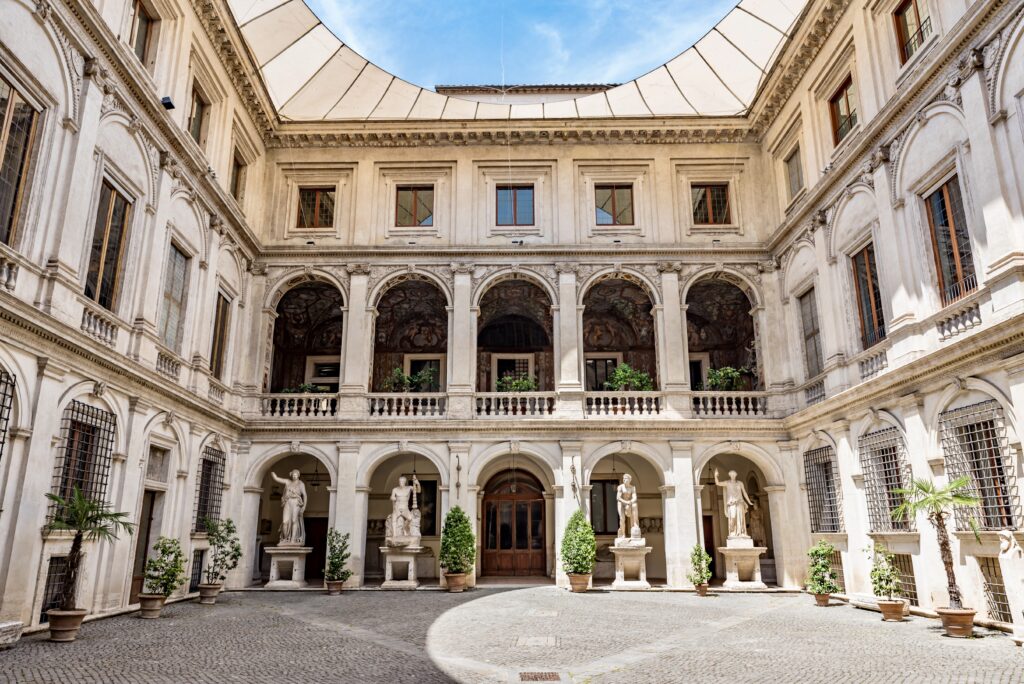
Not only that, but that palazzo and its decor compete for your attention. Many rooms are decorated with frescoes on the walls and ceilings.
The museum is right off Piazza Navona, and yet curiously uncrowded. It’s the perfect place to wander in, see amazing art, and get over crowd fatigue.
The galleries are open and the sculptures given space to be admired. Visiting almost feels like strolling through a garden.
In this guide, I’ll tell you everything to see at the palazzo.
>>> Click here to book a guided tour with a PhD archaeologist
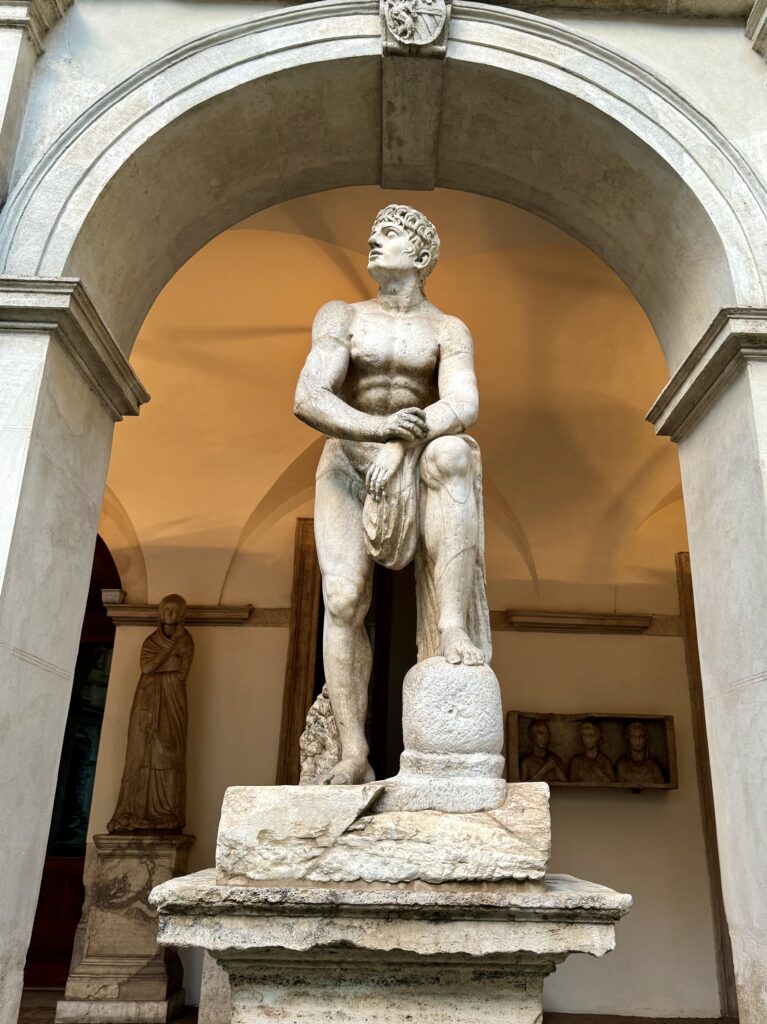
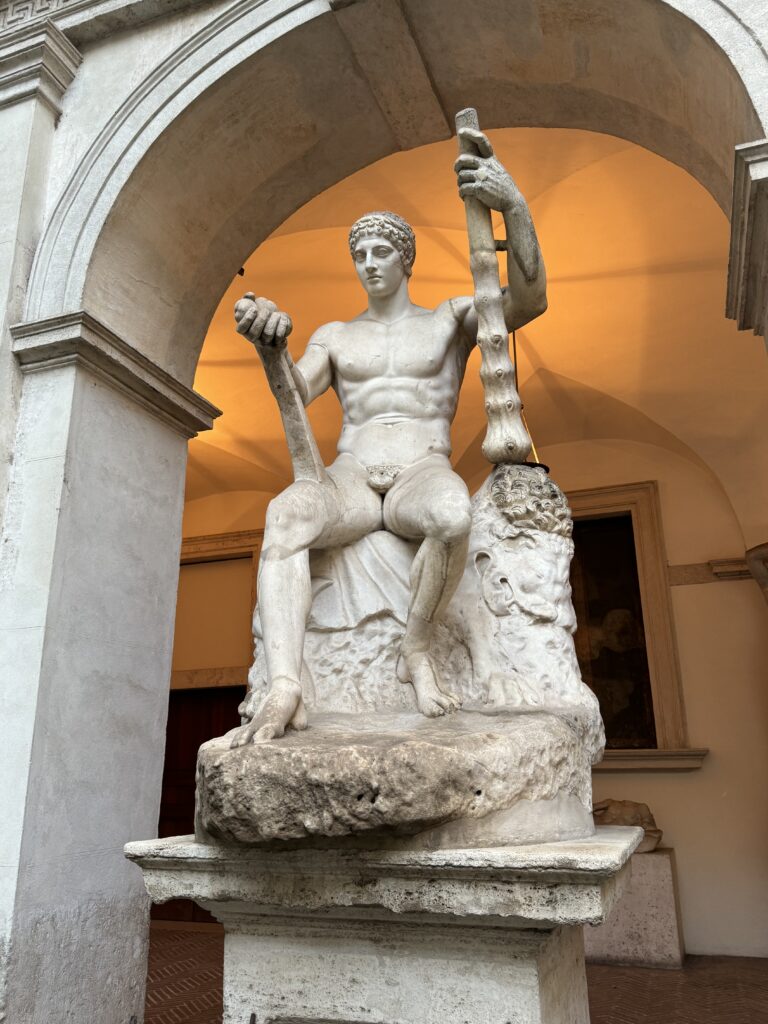
Palazzo Altemps: Masterpieces To See
Courtyard
When you enter the museum, you are greeted by a 5th century BC “herm” sculpture from the Mattei collection.
The entrance leads you into the southern portico and the splendid courtyard, designed by architect Martino Loghi the Elder. The two levels of blind arches give way to porticosat one end.
There are 15 ancient sculptures on display. The finest one is Antonius Pius.
There is a nymphaeum, which is a a curved walk fountain. It’s decorated with mosaics, shells, and colored gravel. It dates from the 16th century, but looks like an ancient Roman one.
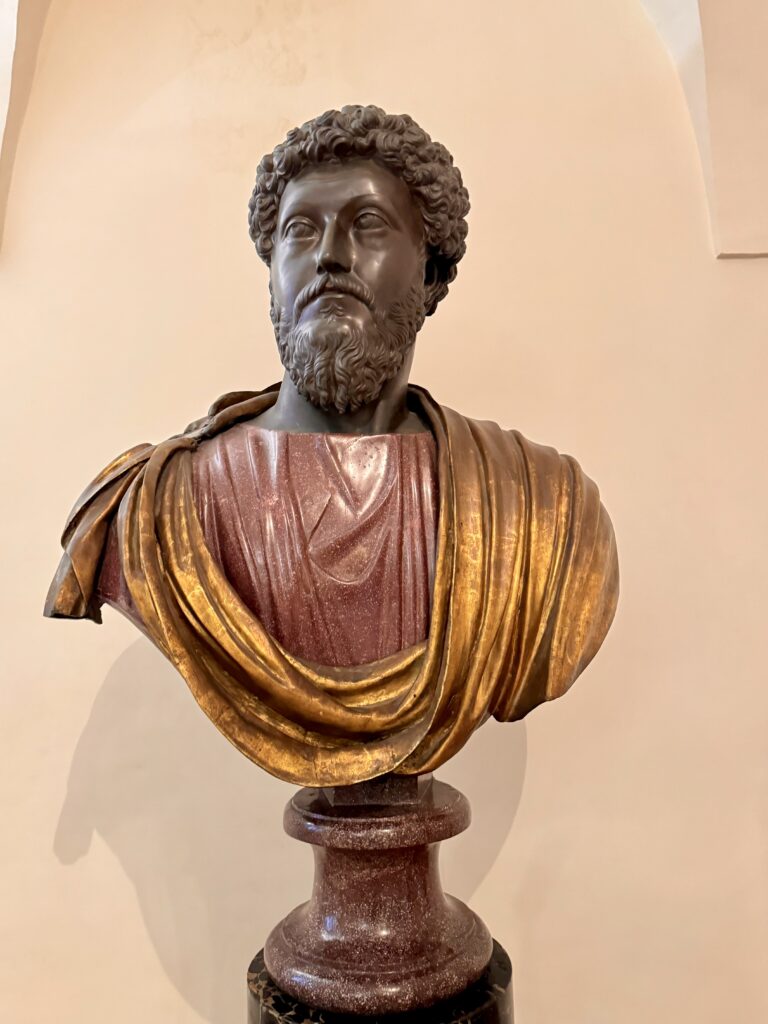
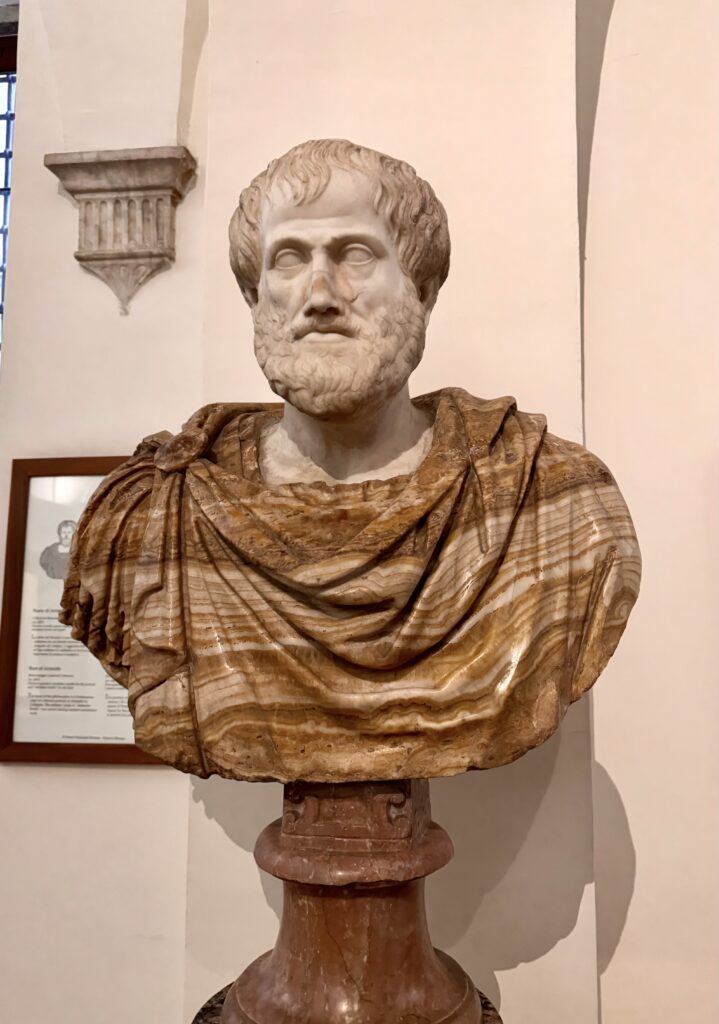
Room of Portraits
This is one of the first rooms you’ll enter. It’s full of portrait busts of famous Romans.
Among the best ones are of Caesar, Marcus Aurelius, Antinous (Hadrian’s lover), and Aristotle. There are gods like Zeus and Pluto.
The porphyry bust of Marcus Aurelius is said to be the finest likeness in Rome. It’s a copy from the Aurelius equestrian statue in the Capitoline Museums.
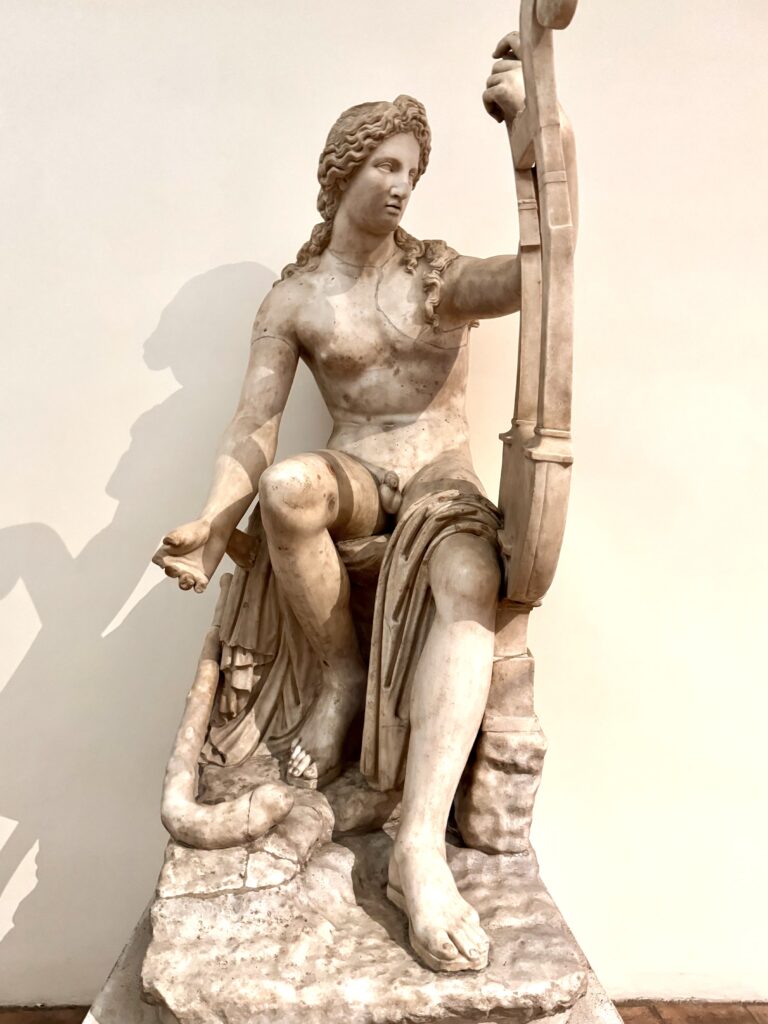
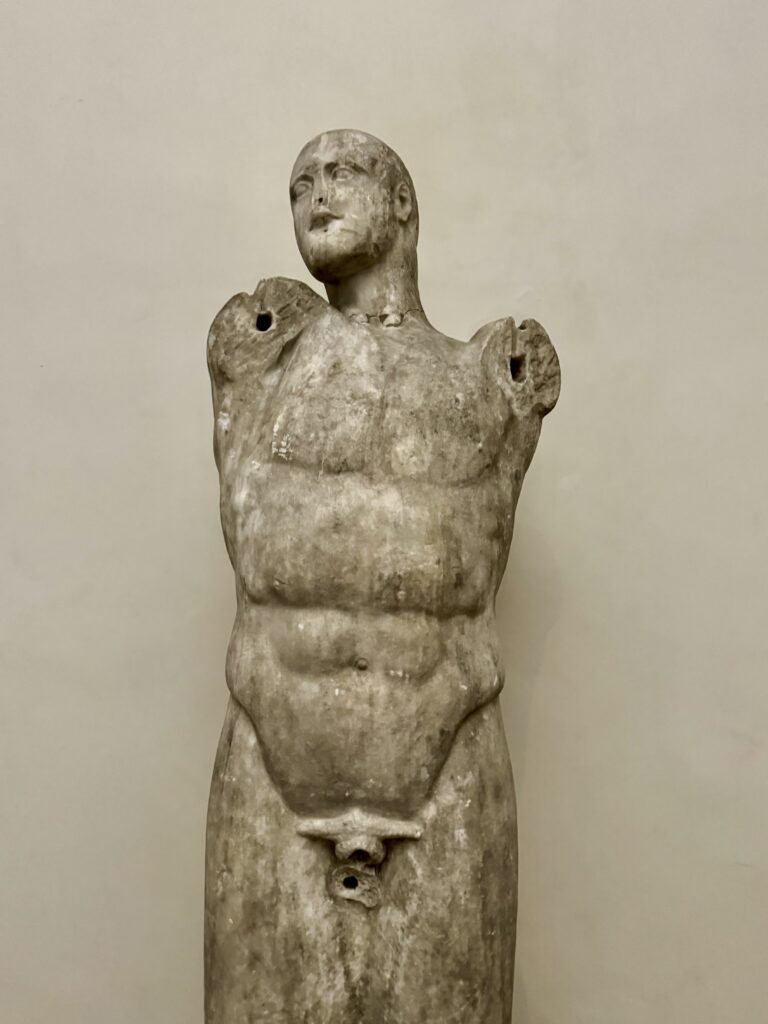
Room of the Herms
This room has six “herm” sculptures found on the Ludovisi estate in 1621. The term “herm” refers to a stone sculpture with a head (of Hermes or other gods) on a square or rectangular pillar body.
The museums most famous one is the Ludovisi Discobolus. It’s based on a 5th century BC statue, executed by the Greek sculptor Pythagoras of Rhenium. This one is somewhere between 200 BC and 200 AD.
There are two statues of a seated Apollo in the room. They face one another in the museum and were probably displayed as a pair too.
Room of the Painted Perspective
This room served as the Room of the Gentlemen, the main access to the piano nobile.
One wall is painted with a blue sky framed by drapes. Others depict rural landscapes or hunting scenes.
There are some over life size sculptures. You see Hercules at rest, Asclepius (restored by Algardi), and an intriguing bust of a satyr.
Cardinals Apartments
The entrance to the Cardinal Altemps’ private apartments leads to a beautifully decorated bed chamber and antechamber.
The bed chamber has a series of grotesque frescos from the 16th century. They depict the passing of the four seasons.
The antechamber is gorgeous. There’s a 16th century frieze with grotesques, landscapes and coats of arms. It’s under an intricately painted ceiling from the 17th century.
The room is also home to a very fine bas relief from Hadrian’s reign. It’s a theatrical mask in rosso antico marble.
Pro Tip: No more than 14 people can enter this room at one time.
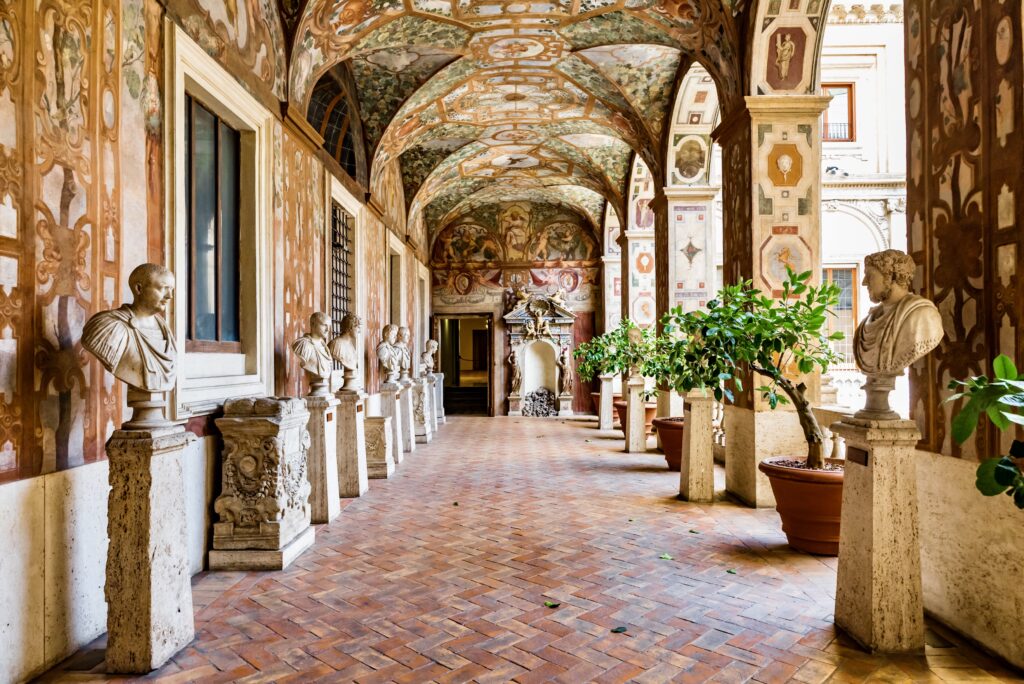
Painted Loggia
From the apartments, you step out onto a painted loggia, the prettiest part of the palace.
The illusionistic frescos are meant to evoke an enchanted garden. Flowers and vines grow on a pergola. The vegetation is thronged with birds, animals, and various fruits.
The lunettes have the coats of arms of the Orsini and Altemps families. There are little putti playing with exotic animals as well.
The lunettes were painted by Italian artist Antonio Viviani. Because they’re similar to Raphael’s tapestry drawings for the Sistine Chapel, Vivani was likely inspired by the great artist.
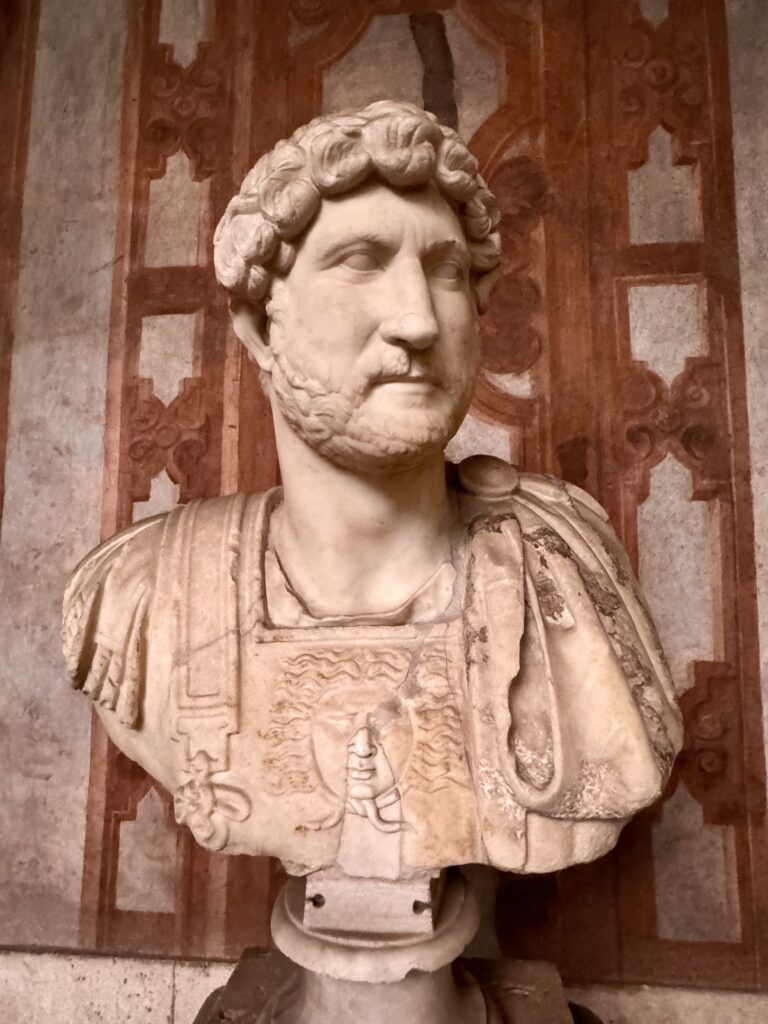
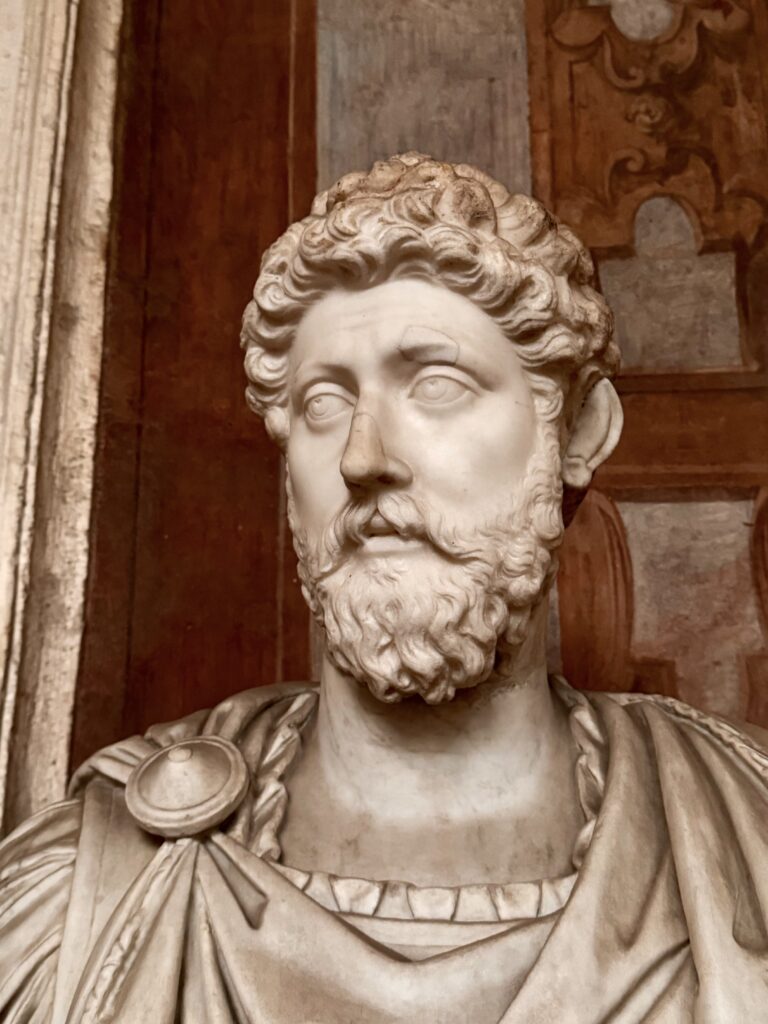
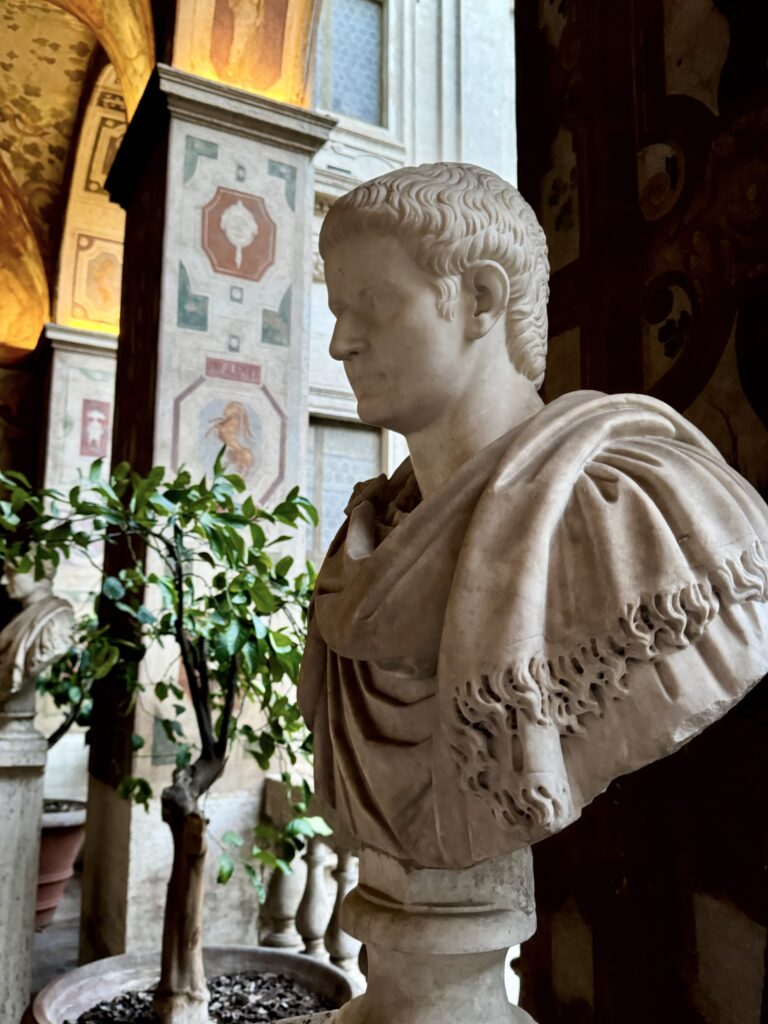
Bust of the Caesars
Because the Painted Loggia was considered the “antiquarium” of the palace, it’s the setting for the Ludovisi busts of Caesars.
12 busts are set on bases from Renaissance. Not all the portraits have a certain attribution, except for the recognizable one of Hadrian.
Many of them were probably of private citizens, and the names of emperors were attached.
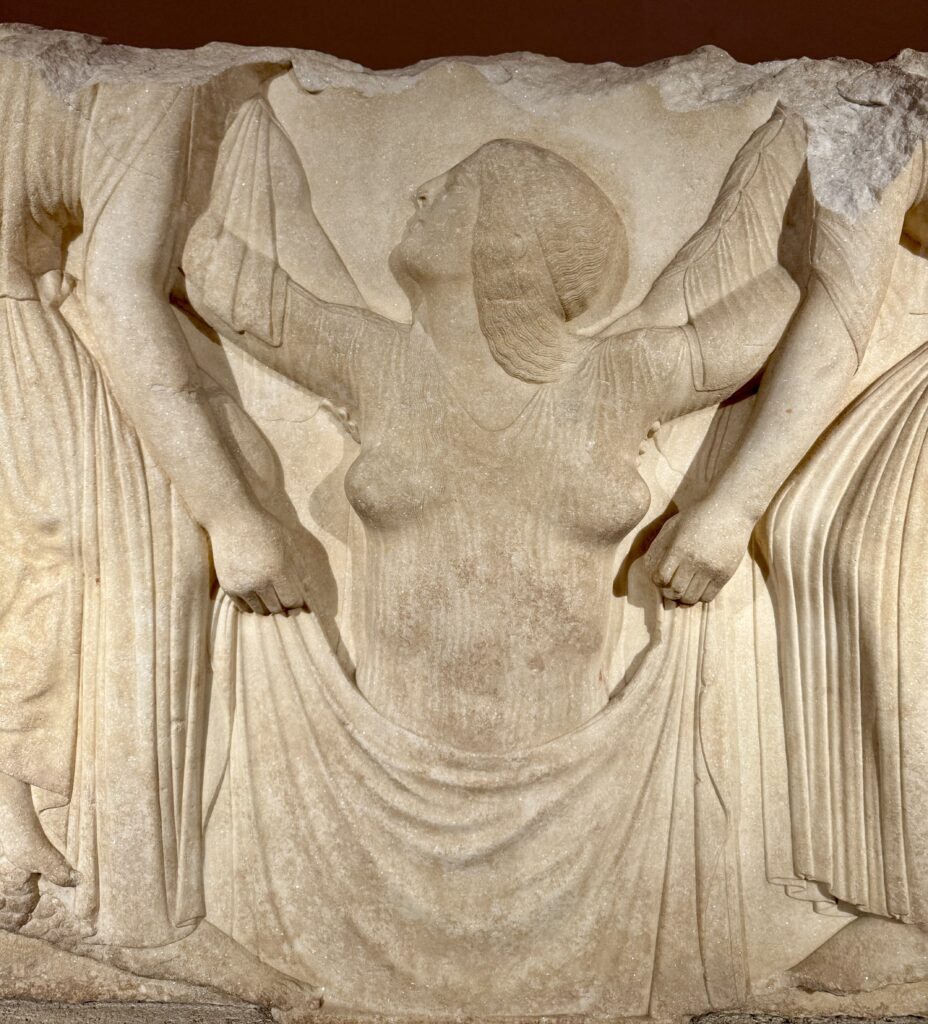
Ludovisi Throne
The Ludovisi Throne is the highest poetic expression of the art of ancient Greece. It’s the museum’s most famous and valued piece.
It’s a gorgeous three sided relief. On the front, it portrays the mythical birth of a fragile Venus (Aphrodite) from sea foam. Some scholars argue that the figure may also be Persephone, who returns every spring from the underworld.
On the right side a young female plays a flute. On the left, a woman wearing a mantle places incense in a burner. They are priestesses devoted to rites in honor of Aphrodite.
It’s not really a “throne” or seat per se. It’s a three-sided enclosure that was probably used in the worship of Venus.
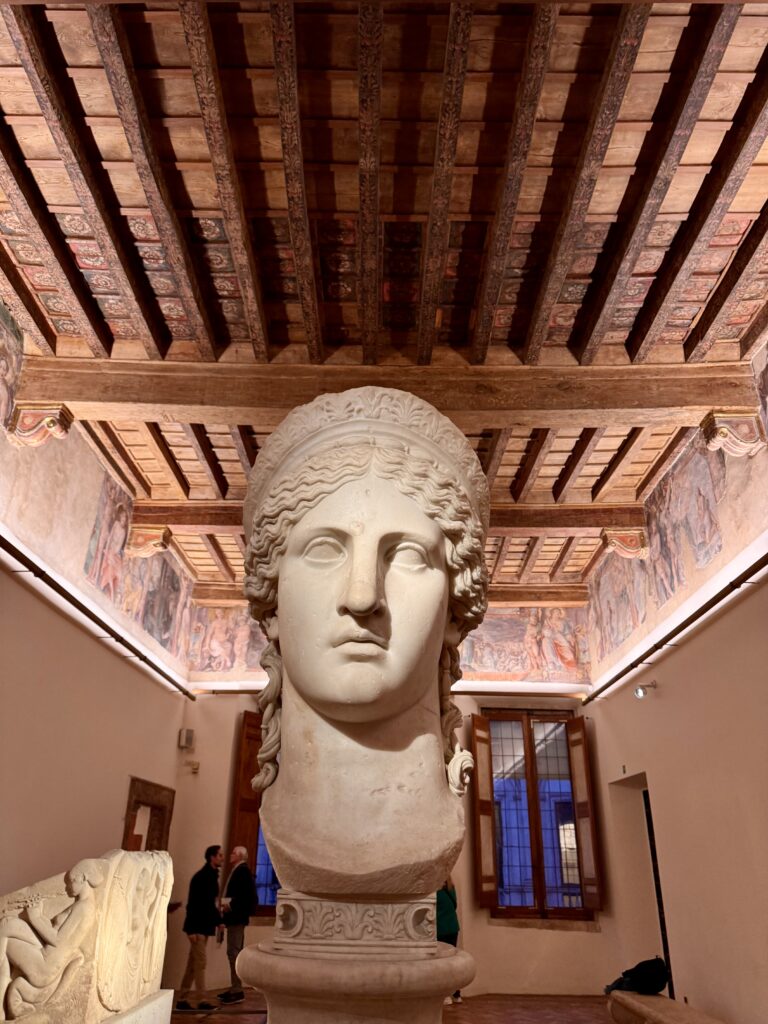
Ludovisi Juno
In the same room as the throne is a colossal bust of Juno (Hera), three times life size. When Goethe say it when it was discovered in the Villa Ludovisi, he proclaimed it ”my first Roman love.”
It was a wildly popular magnet for those on the grand tours of the 19th century, embodying the canons of Neo-Classicism.
Juno is depicted with idealized features. She’s shown with a diadem, lotus flowers, and perfectly curled hair.
It was likely a cult statue. But some historians identify it as Livia, the wife of Emperor Augustus. Others say it was the mother of Emperor Claudius.
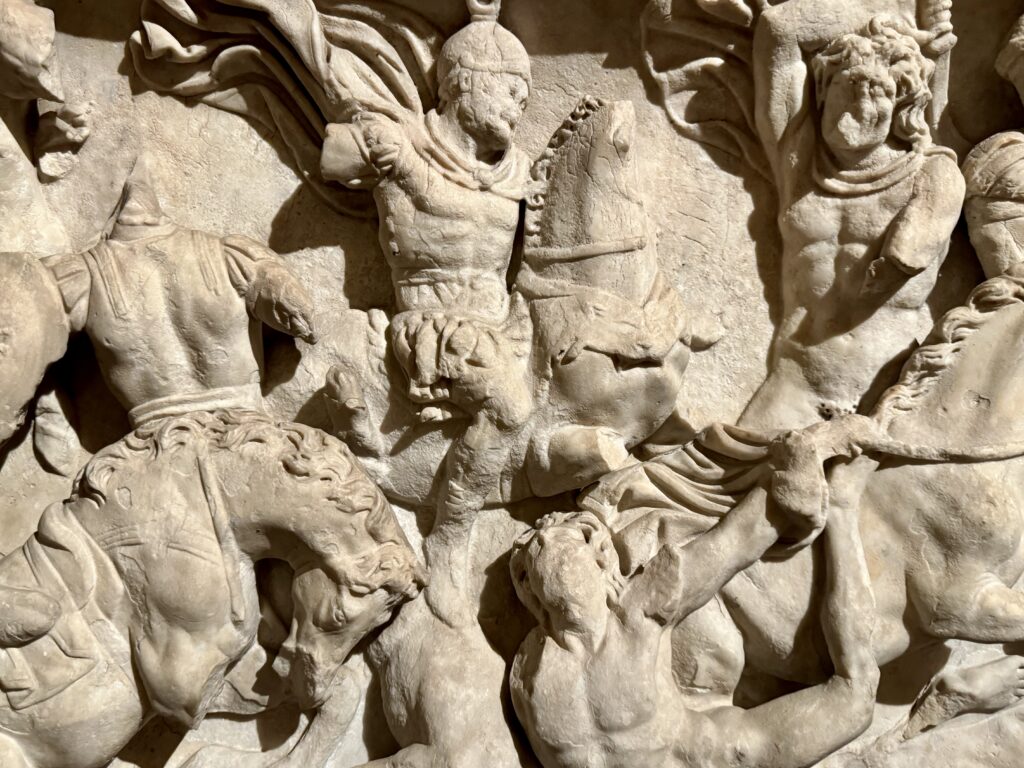
Grand Ludovisi Sarcophagus
The Grand Ludovisi Sarcophagus is an impressive ancient Roman sarcophagus dating from around 250-260 AD.
It’s known for its elaborate and high-relief carvings depicting a chaotic battle between Roman soldiers and their Germanic enemies. This type of “battle sarcophagi” was popular among Roman military leaders of the time as a symbol of their bravery and heroism.
The sarcophagus is carved from a single piece of Proconnesian marble. It was originally polychrome and you can faint traces of paint and gilding on the surface.
The Romans and barbarians are in stark contrast. The Romans wear magnificent armor and seem fierce and poised. The barbarians are shown as feral and disheveled, almost a caricature.
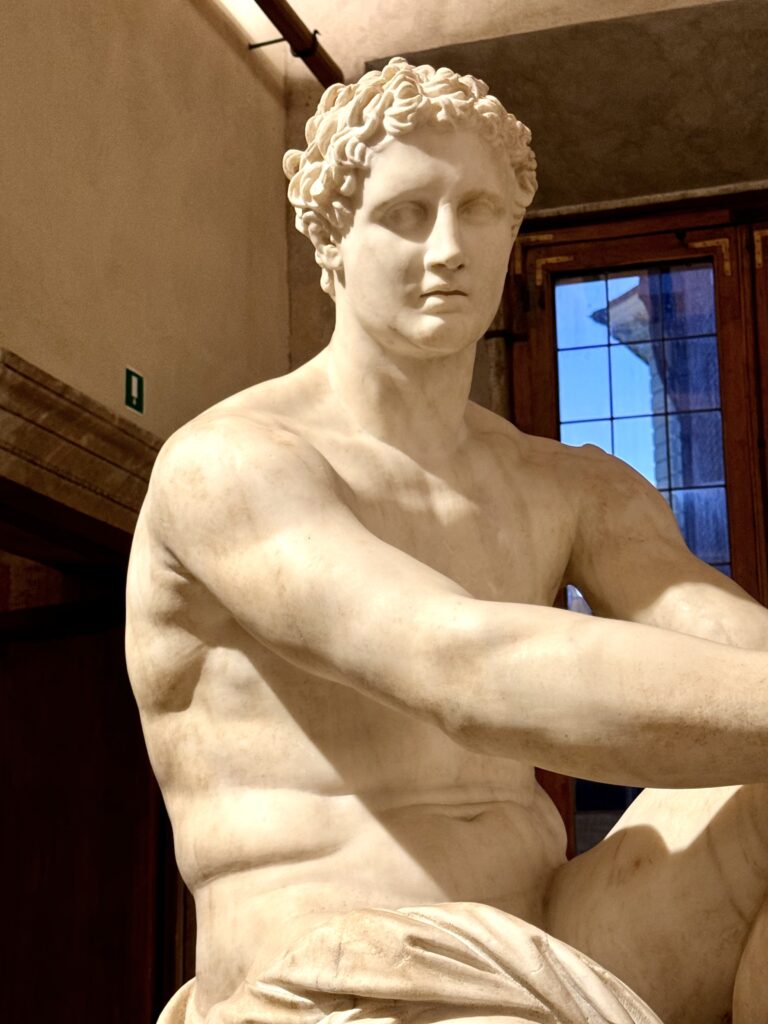
Ludovisi Ares
An entire room is dedicate to the Ludovisi Ares. It was discovered in 1621 and restored by Bernini. He added some additional parts (nose, foot, sword hilt), but made his changes recognizable.
The sculpture is a Roman copy of a Greek original from the 2nd century BC. It depicts Ares, the Greek god of war, seated on a rock in a repose.
Despite his muscularity, and Ares’ association with war, the god looks rather introspective.
He’s in a state of heroic nudity, holding a sword. The figure is accompanied by a small Eros (Cupid) at his feet, adding a dimension of tenderness to the otherwise formidable god.
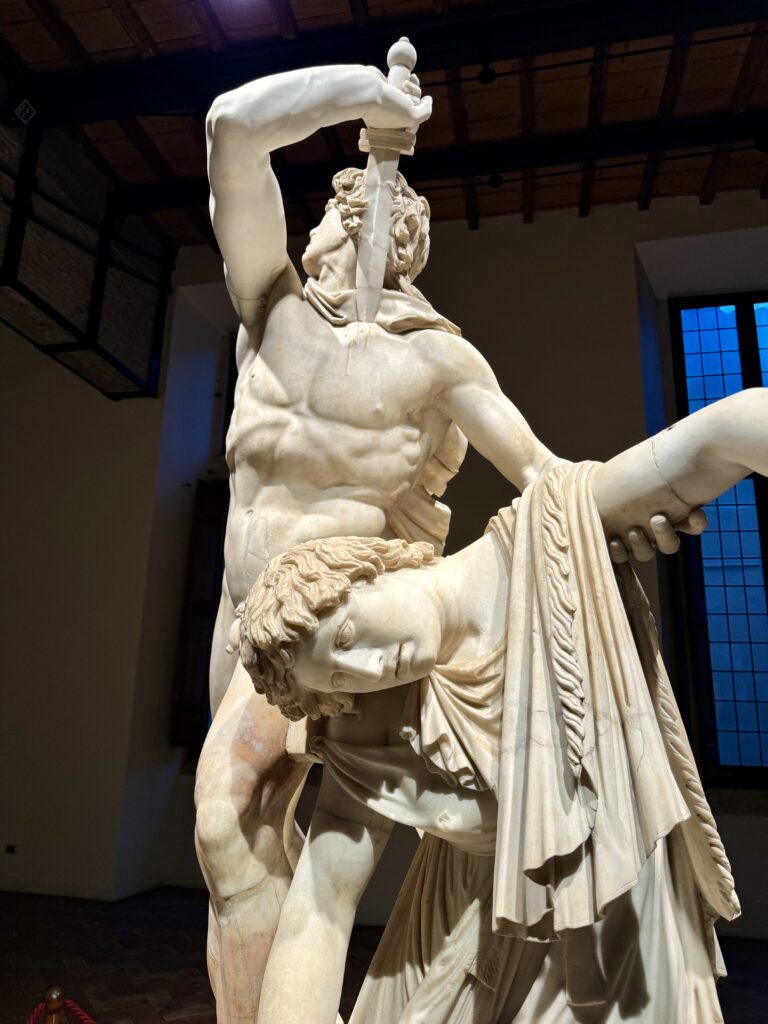
Ludovisi Gaul Committing Suicide
This statuary group represent a Galatian chief committing suicide after killing a woman thought to be his wife. It’s a poignant representation of defeat and honor.
The sculpture portrays a dramatic and tragic scene from the Gallic invasions of Greece. A Gaulish warrior, in a moment of desperate defiance, prepares to kill himself to avoid capture and disgrace.
You see a nude warrior plunging a sword into his breast and gazing upward with an expression of determination. It’s a dynamic “in the round” sculpture meant to be seen from different points of view.
The sculpture entered the Ludovisi collection along with the famous Dying Gaul, which is now at the Capitoline Museums.
The sculpture is in the Hall of Galatians. Take a look at the stunning marble fireplace, which is held up by caryatids.
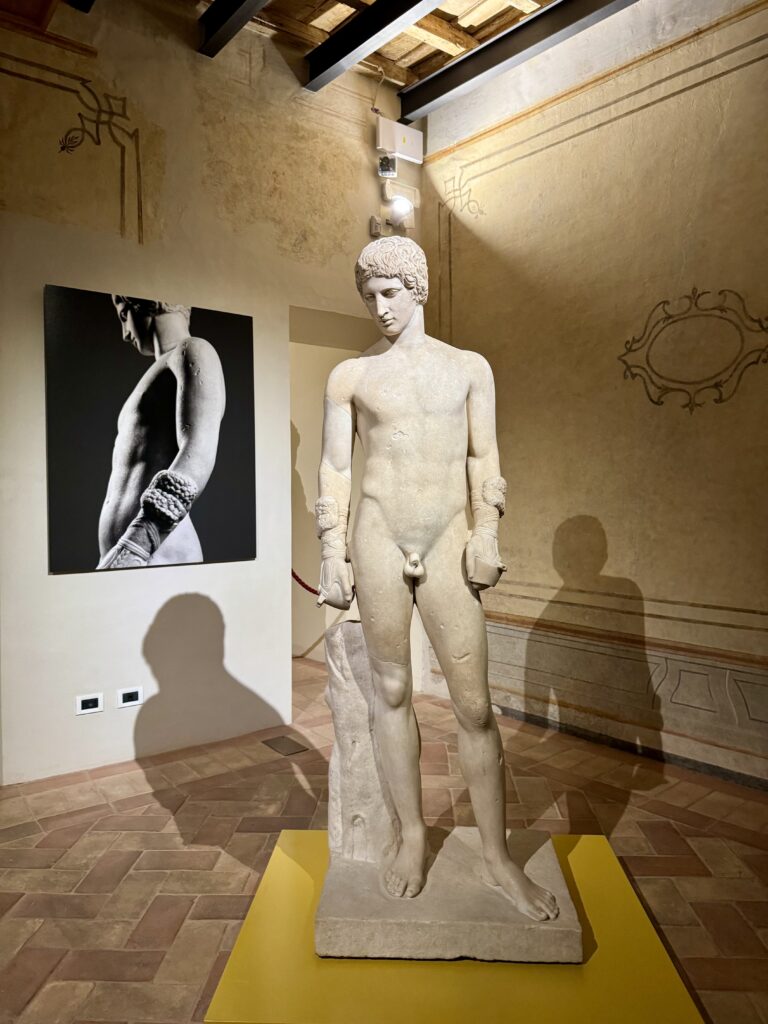
Statue of a Boxer
Naked and young, the athlete is identified by his fighting equipment — the strips of leather that cover his hands and forearms.
It’s a Roman copy of a bronze Greek original from the 4th century BC.
The sculpture was found in 1739 during excavations in the mansion of Carindla Gentile.
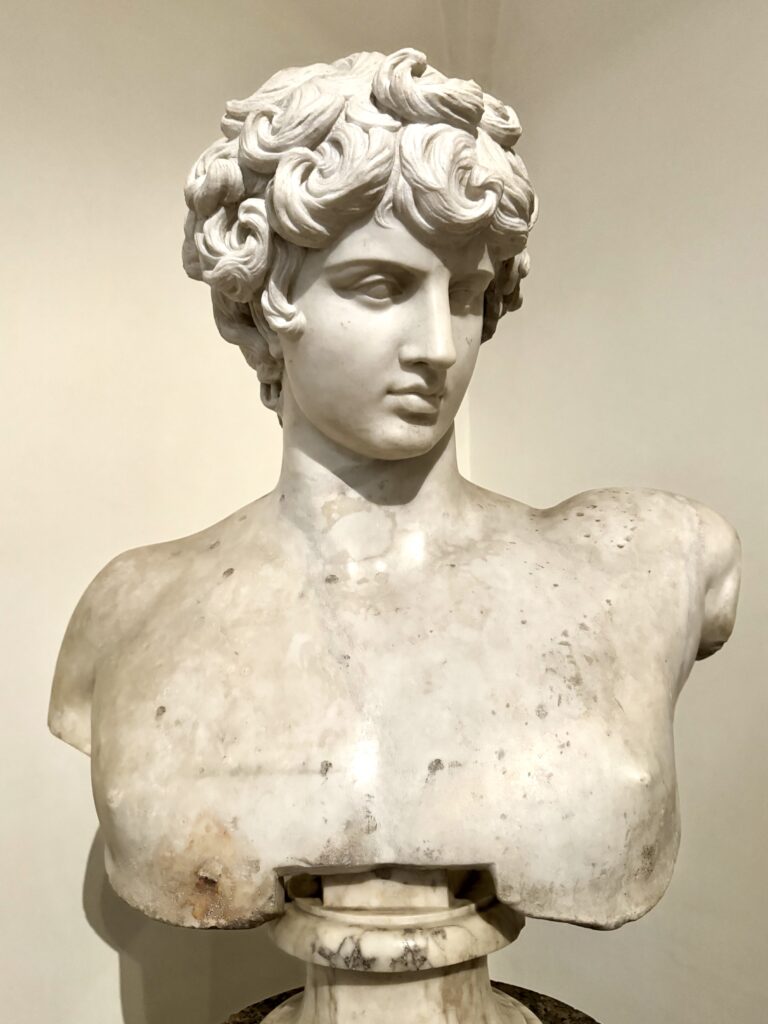
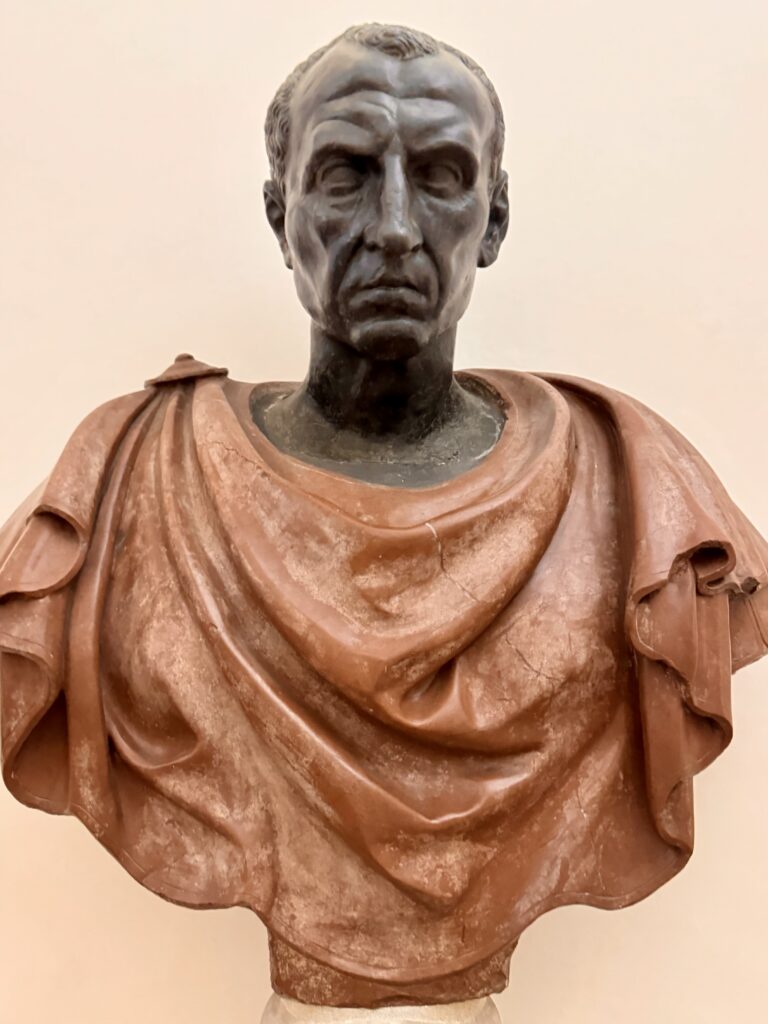
Practical Guide & Tips For Palazzo Altemps
Address: Piazza Sant’Apollinare 46. It’s just north of Piazza Navona.
Hours: Open 9:30 am to 7:00 pm. Last admission is 6:00 pm. Closed Mondays.
Tickets: 11 euros. You can also buy a combined ticket that includes the other National Museum of Rome sites (Palazzo Massimo, Diocletian’s Baths, and Crypto Balbi).
Is Palazzo Altemps Worth Visiting?
I thought the palazzo was a delightful and underrated museum, especially if you like ancient statuary. It’s also utterly uncrowded, which is another point in its favored in overcrowded Rome.
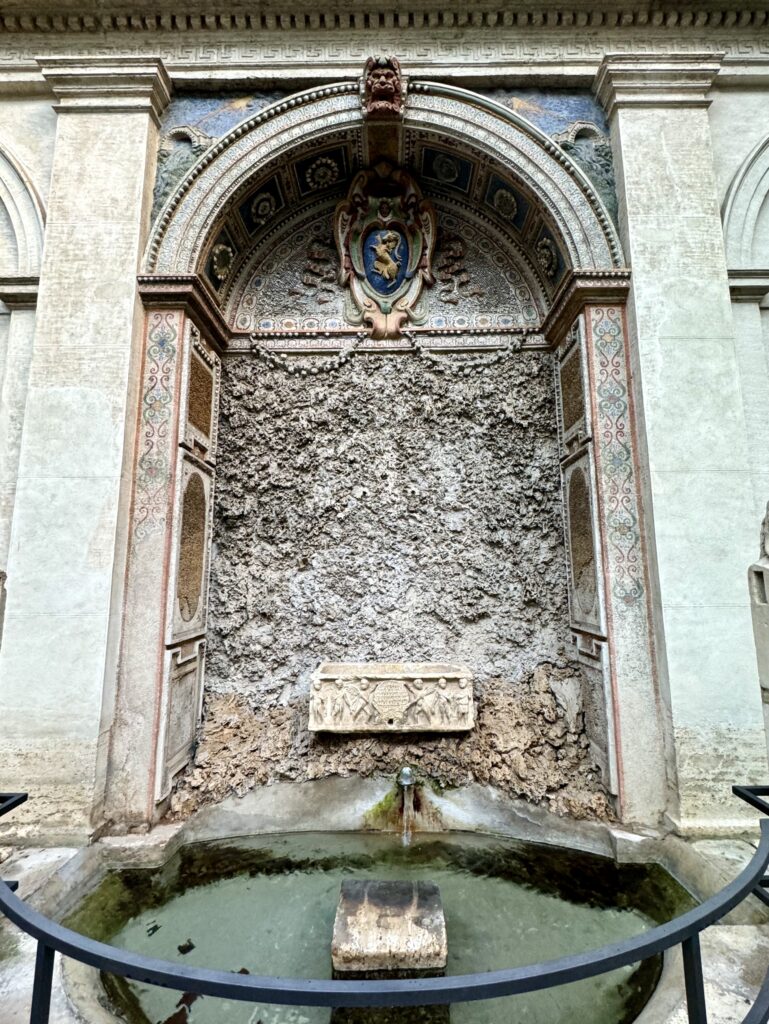
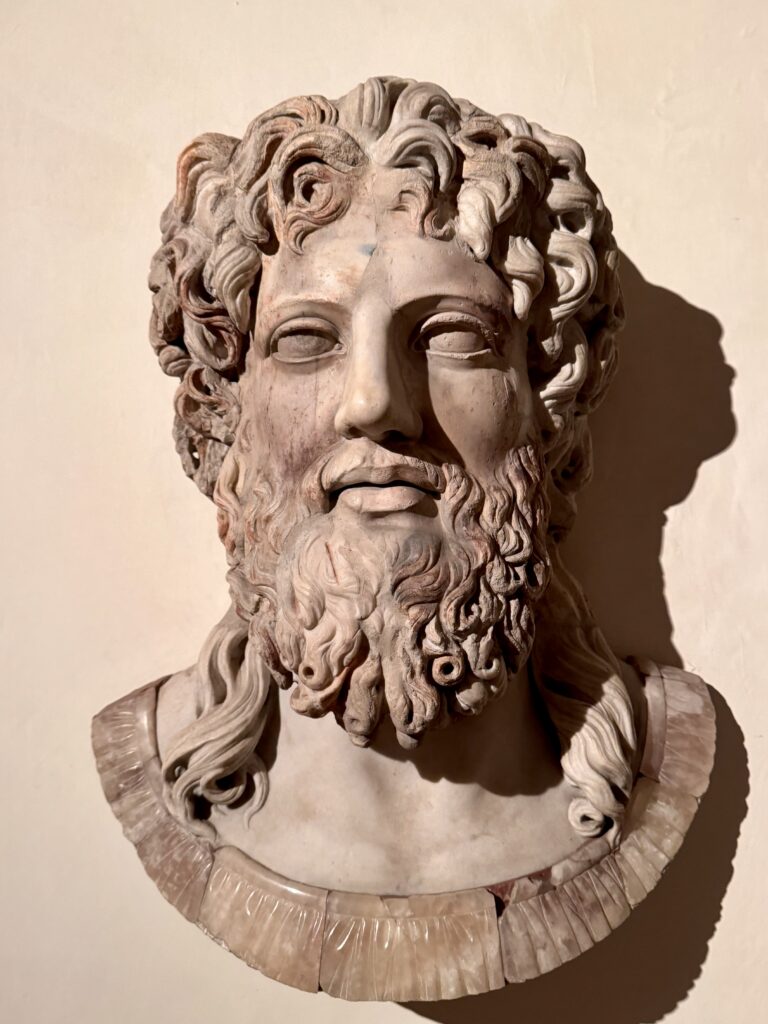
How Long To Spend: It’s not a large museum, with exhibits on just two floors. But I would budget 1-2 hours, depending on your interest in ancient statuary.
Pro Tip: The museum is a tad dark and chilly if you are visiting in winter.
I hope you’ve enjoyed my guide to Palazzo Altemps. You may find these other Rome travel guides useful:
- 8 ways to spend 1 day in Rome
- 3 day itinerary for Rome
- 4 day itinerary for Rome
- 5 day itinerary for Rome
- Best museums in Rome
- Hidden gems in Rome
- Archaeological sites in Rome
- Guide to the Borghese Gallery
- Guide to Palatine Hill
- Guide to the Roman Forum
- Guide to the Colosseum
If you want to visit Palazzo Altemps, pin it for later.

